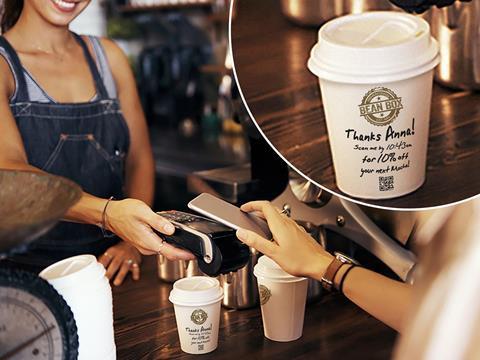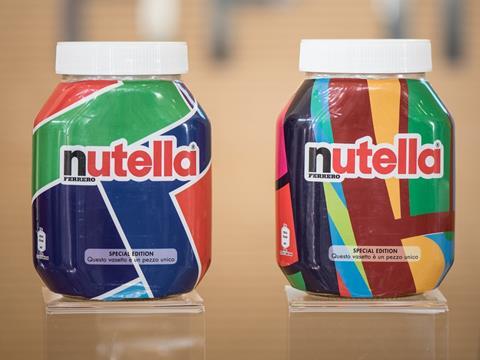
In the past the goal of most manufacturers was to achieve high volume performance with high efficiency, paying attention to a kind of product standardisation. When change was required, switching the set-up to meet the new needs generated long periods of downtime or could even result in another piece of equipment being added to the line. Flexibility came at the cost of efficiency. Today’s challenge is to combine high flexibility with efficiency and versatility in order to meet consumers’ demands for greater personalisation, which are often driven by changing purchasing habits such as marketing campaigns and e-commerce. Packaging Europe’s Libby White caught up with the industry leaders offering technological advances and setting trends in this field.
Consumer behaviour has changed, and as such, marketers continue to look for ways to win at the shelf and truly connect with their audiences. The package has become another way for brands to connect emotionally with EACH consumer - both offline and online, as today’s consumers demand. Digital printing has become a way to communicate and enable brands to respond to the market quickly and remain relevant.
Unique connections
Monique Cohen, labels segment manager, HP Inc. points to the shining example of mass customisation, Coca-Cola’s ‘Share a Coke’ campaign, which is regarded as a watershed moment in branding – when design and advertising collided; when personalisation became mainstream; when a global Goliath became nimble and quick-footed simply by embracing a new and agile technology.
“The campaign, which has resulted in more than 500 billion labels worldwide, led to a four per cent rise in sales globally across the markets where it appeared. And this was just the start. Since their initial ‘Share a Coke’ campaign, Coca-Cola has adopted digital printing as part of their global marketing strategy, leveraging HP Indigo technology for various other campaigns like ‘Coke Extraordinary’ and ‘Share a Coke and a Song’.”

All HP Indigo digital presses enable the printing of ‘each copy different’, allowing brands and retailers to engage with consumers on an individual basis through customised labels and packaging. Technology like HP’s SmartStream Mosaic software allows brands to create truly one-of-a-kind designs. As a result, the brand can produce limitless unique designs for their packaging for great shelf appeal.
“HP Indigo digital printing technology also enables brands to print exactly what they want when they want it while reducing their time to market. Print on demand dramatically reduces inventory and waste, and helps optimise supply chain, which has become very complex in today’s dynamic market,” adds Monique Cohen.
Complex challenges
In addition to being able to produce an increasing number of product types to meet this demand for personalisation, the modern manufacturer also has to produce a variety of stock keeping units (SKUs), such as rainbow packs, promotional packaging or smaller cases. Traditionally repacking has been the answer to this need. This is often outsourced to contract packaging companies at different locations leaving manufacturers with only an approximate idea of the process and the costs. In fact, industry experts estimate that around five to ten per cent of beverage products that leave a production plant are repacked at a later date, while the figure for home and personal care products is 30-50 per cent. Figures like this clearly show that flexibility has reached its limit and that agility is required in less predictable environments, when volume is low and variability requirements high.
“The trend for bigger production plants has so far been to build high-speed, high-efficiency lines. However, once the product leaves the lines, the pallets are often dismantled and then repacked in promotional packs – often by hand! With little visibility, around how this takes place, there is a real need for an easier way to repack into mixed packs or personalised packs,” comments Benjamin Delesalle, key market director, Home, Personal & Health Care, Gebo Cermex.
Another approach that is gaining ground is to use more flexible solutions that combine, for example one dedicated line for a standard SKU and a second line with high flexibility for mixed flavours, rainbow pallets and mixed packing. By having two lines, one for standard products and one for personalisation, a manufacturer can meet the need for customisation but without compromising on quantity for mainstream products. However, while introducing smaller pieces of equipment increases flexibility, it also increases complexity – and the challenges that accompany it.
E-commerce has been a driving force in the need for flexible packaging sizes. Internet retailers want single containers that they can repackage in their own cartons. This enables them to decrease costs while offering consumers the product formats they want. However, the challenge for producers is to create a stable pallet with individual containers that can be shipped to the big e-commerce retailers.
This has led to the development of so-called intralogistics and dematerialised connections that allow manufacturers to produce a single container, store it in the warehouse and then return it to the production floor for final packing or personalisation. For big brand owners, this is a way to create rainbow packs or promotional items in a timely and cost-efficient way.
Indispensable solutions
Digital printing especially in labels has become mainstream and indispensable to brands of all sizes – large global brands and small local ones. This trend is now beginning to make its mark on the flexible packaging and folding carton segments as well. More and more companies are discovering the advantages that digital production can offer like getting to the market quicker, reduced waste and inventory by just in time production and, and all this with almost unlimited creativity and ways to connect with their audience in new and innovative ways.
Monique Cohen comments, “One trend we’re seeing more at HP is the work brands are doing to support causes. For example, Smirnoff’s Love Wins campaign which promoted equality through the printing of 500 unique limited-edition bottles.”
Another example is what US Frito-Lay did to speak out against drunk driving. Partnering with MADD (Mothers Against Drunk Driving), they created a limited edition “Party Safe” Tostitos chip bag that doubles as a Breathalyzer. On each bag was variable data which provided a discount code for an Uber home after the Superbowl.
Nescafé launched a 100 per cent integrated campaign that begins with the package and covers all customer touchpoints. The campaign labels included 300 of the top Mexican New Year resolutions. On the back of the label, consumers could scan the jar and using the app Shazam, track the progress of their resolution (learn English, lose weight, smile more often, help others, make more money, etc.); The results of the campaign included ten per cent year over year sales increase, over 20,000 interactions with Shazam app, 45 million TV views and 14 million labels produced. Launching a campaign such as this one, in which time-to-market was critical and the entire campaign was based on mass-customised units, was only possible through digital print.

Connectivity throughout the value chain
In addition to digitising the production line, Industry 4.0 solutions are making it possible to digitise the entire value chain and make use of connectivity for production on demand. Manufacturers can now connect upstream to supply of materials and ingredients and downstream to logistics. The line knows when it is short of ingredients or if a spare part is showing signs of wear and tear. Likewise, the downstream logistics and distribution chain can be managed in real-time. The introduction of this type of connectivity and data will enable value chains to be optimised and restructured to make it easier, faster and more efficient to get products to consumers. When consumer needs change, the line is ready to adjust.
The advent of data produced by the line also enables other developments, such as serialisation and traceability. This technological advance can be used to protect against counterfeit products and guarantee safety in liquid packaging. For example, traceability technology is increasingly in demand by manufacturers working with aseptic production of sensitive products. Systems of this kind provide global end-to-end documentation of food safety and compliance, a must-have for businesses operating in this environment with ever-increasing legislative demands.
“In the pharma industry, they use serialisation in the fight against copy products. This is something we’re starting to see in food and beverage manufacturing. In the growing category of health science, in the cross-field of food and pharmaceuticals, making sure that bottle content is genuine is a must. This is where a track and trace system that makes use of production data can help to secure authenticity,” says Herve Bour, key market director, Food, Gebo Cermex.
Packaging evolution
According to a Smithers Pira report, digital printing is the fastest growing segment in packaging with a projected annual growth of 17 per cent in a market expected to be worth $19bn by 2019.
Monique Cohen concludes, “At HP, we don’t see this trend slowing down anytime soon – in fact, packaging printing is HP GSB’s fastest growing segment. Consumers continue to demand more engagement from brands, and one way this is coming to life is in packaging.”
















